Sehore: Vellore Institute of Technology Bhopal students were quietly coping with “contaminated water”, “stale mess food” and reported incidents of jaundice for months. They were buying bottled water to escape the contamination. And it had all remained a campus affair. The night before the institute hit national headlines, many were buried in their books, preparing for the exams. But on Tuesday night, the calm turned into chaos. A reddit video of a warden slapping a protesting student spread like wildfire, turning the campus into a riot zone. By 3am, the place had become a fortress with heavy police presence.
The peaceful protests were going on at Block 6, inaugurated barely a year ago by Madhya Pradesh Chief Minister Mohan Yadav.
Multiple vehicles were set ablaze and many were damaged. The chancellor’s bungalow was ransacked by angry protesters. The students rallied over a widespread jaundice outbreak on campus. A private university campus violence shook the district administration and the police apparatus.
VIT is a national brand in India’s higher education landscape and has been recognised as an Institute of Eminence. Students across the country are part of the Bhopal campus. Now, the campus has turned into a ghost town as worried students leave their hostels for home. But Tuesday’s violence starts a new debate—how private universities, responsible for thousands of students’ careers, handle their distress. The violence, now under a state government investigation, raises tough questions for a university that touts national stature, yet failed to prevent its campus from descending into disbelief and disorder.
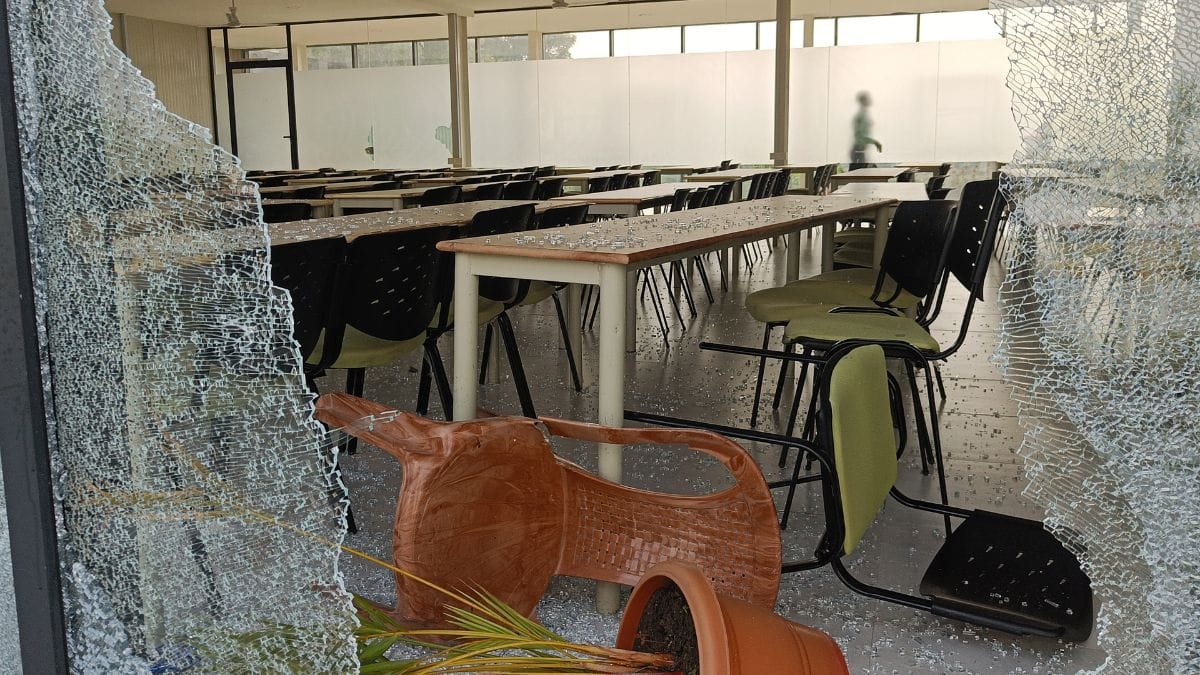
The video ignited students, and within minutes thousands of them gathered on campus—something the university administration hadn’t anticipated. However, there were clear signs of distress. Except it was all online. Reddit pages were slowly becoming the witness of what was likely to follow. Students venting their frustration against the university administration for months; of not heeding to their demands of hygienic food and clean drinking water.
Now, the university administration is seeing it as a social media triggered incident.
“What we need to understand from the incident is the power of social media. A situation can be made really traumatic by linking up factors and sensationalising it and making an emotional appeal and then the consequences could be anything. So, that is one learning we have from the whole thing,” said KK Nair, VIT registrar sitting at his office at the administrative block.

Sub-Divisional Magistrate of the Ashta subdivision in Sehore district, Nitin Kumar Tale said that the university had failed to take students into confidence.
“If they talked with students on time, the incident wouldn’t have happened. There was a gap between students and the university administration,” said Tale.
Also read: Is Delhi University no longer in demand? Vacant seats, misfit faculty, bloated syllabus
The night VIT burnt
The scars of the violent Tuesday night are fresh on the campus. Burned vehicles, shattered glass, and broken doors reveal the horrors. The walls of the women’s hostel painted in blue ink with the words Revolution and Inquilab.
“(Before violence) Students tried to organise a peaceful protest demanding better food and water on campus. But the warden suppressed it and beat some of them,” said Aryan who resides at the Block 6 hostel, the epicentre of the protest on Tuesday night.
It was around 10 pm on Tuesday. Students had gathered outside the Block 6 and were peacefully protesting against the alleged jaundice outbreak on campus. There was talk of three students dying of jaundice after 33 (11 girls and 22 boys) had taken ill in the last two weeks. And a reddit post was one of the sources spreading this information.
Students claimed the university ignored repeated complaints about food and water quality. And their frustration was visible online.
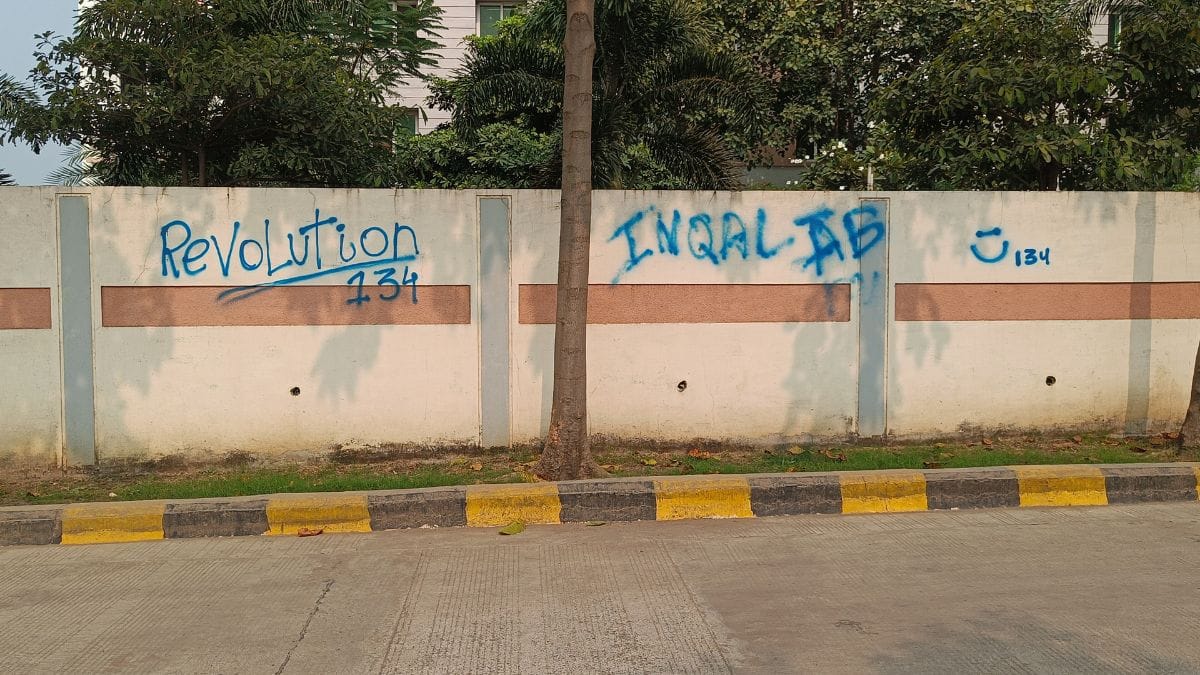
“Guys this is serious! In VIT Bhopal because of the unhygienic practice followed in their Canteen many students 60-70s got sick of jaundice,” read one of the posts on reddit, which has over 3,000 likes and 100 comments. “When students protested they were beaten up on the campus. This needs to reach higher authorities,” read another post on Reddit.
Soon, calls of student unity against the college administration started pouring in. “Bhai pura hostel ek sath aa jao kisi ke baap k dum nhi h kuch kr lee,” read a comment.
Some students instigated their juniors to join in the protest. “Are my juniors really this soft. The post (about jaundice outbreak) reads: Dead count is 3. May increase later. You may be next, your girlfriend may be next, your bhai may be next.”
Within half an hour thousands of students gathered in the campus shouting slogans against the administration. Students, many with faces covered, would go on to set university buses, an ambulance, and cars on fire.
The visuals circulating on social media show flames rising high from the campus and students shouting slogans.
The university administration was unaware of the violence on campus till it reached chancellor’s bungalow. It was around 3 am when an official call was made to the police.
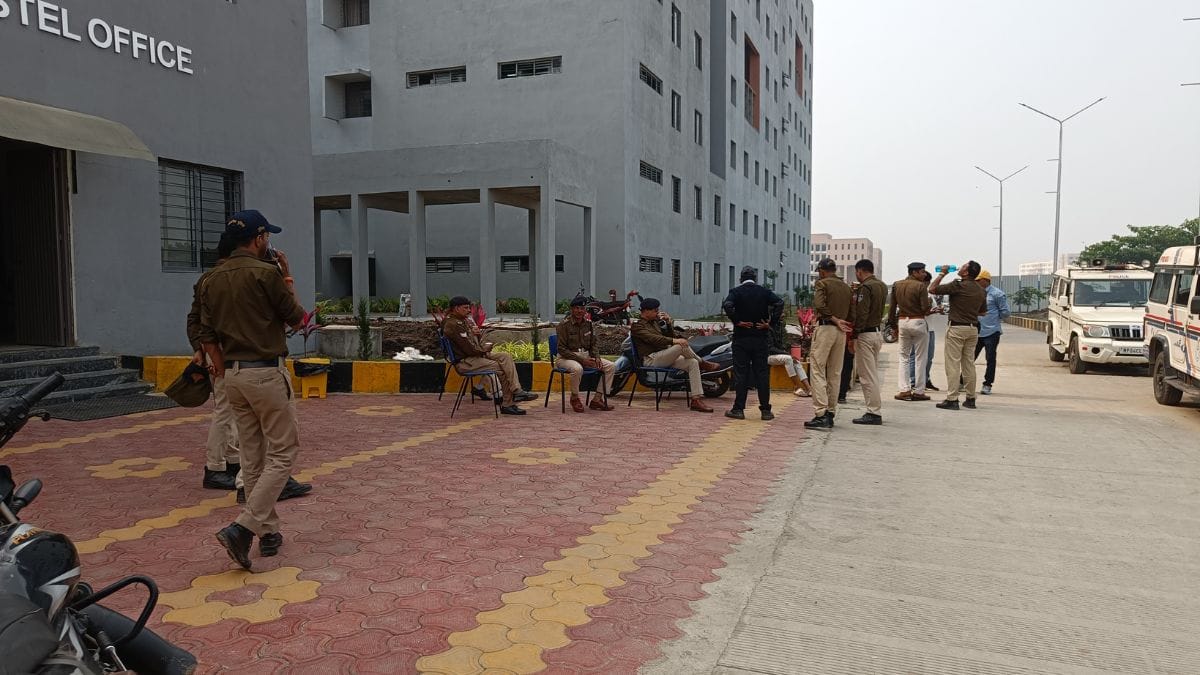
“The situation was out of control. We have no other option but to call the police. Within an hour they came and controlled the situation,” said Nair, adding that by then the campus had faced extensive damage of property. Nair said the administration is assessing the loss to the property due to protest.
Police teams from Sehore and neighbouring areas were deployed by the district administration.
“It was a chaotic situation on violence night. Mobs damage university property and our teams are investigating the matter and examining the reasons behind the violence,” said Tale.
Also read: Military coaching centres are the new UPSC. Small towns preparing for ‘supreme sacrifice’
A grand campus, some long-standing demands
At the 300 acres of sprawling lush green campus of VIT, more than 12 thousand students reside. The campus has a total of 10 hostels, including eight for boys and two for girls. It offers BBA, MBA, MCU, B.Tech, M.Tech courses. Students from across India are enrolled here.
“Student communities from various states of India present a diverse cultural ambience on campus,” reads the university website.
But a grand infrastructure and high fee structure did not guarantee basic amenities, according to students who had been demanding hygienic food and clean drinking water for the past two years.
“A student is paying an average of Rs 4-5 lakh annually at the campus. Still, they are not providing us good facilities. We raised the matter several times to the authorities but they never resolved it,” said Harsh, a final year student at the campus.
VIT has a four-decade long journey. It was founded by Dr. G Viswanathan who is also the current chancellor. The institution has grown into a large university system with its Vellore campus having acquired the prestigious name among both medical and engineering students.
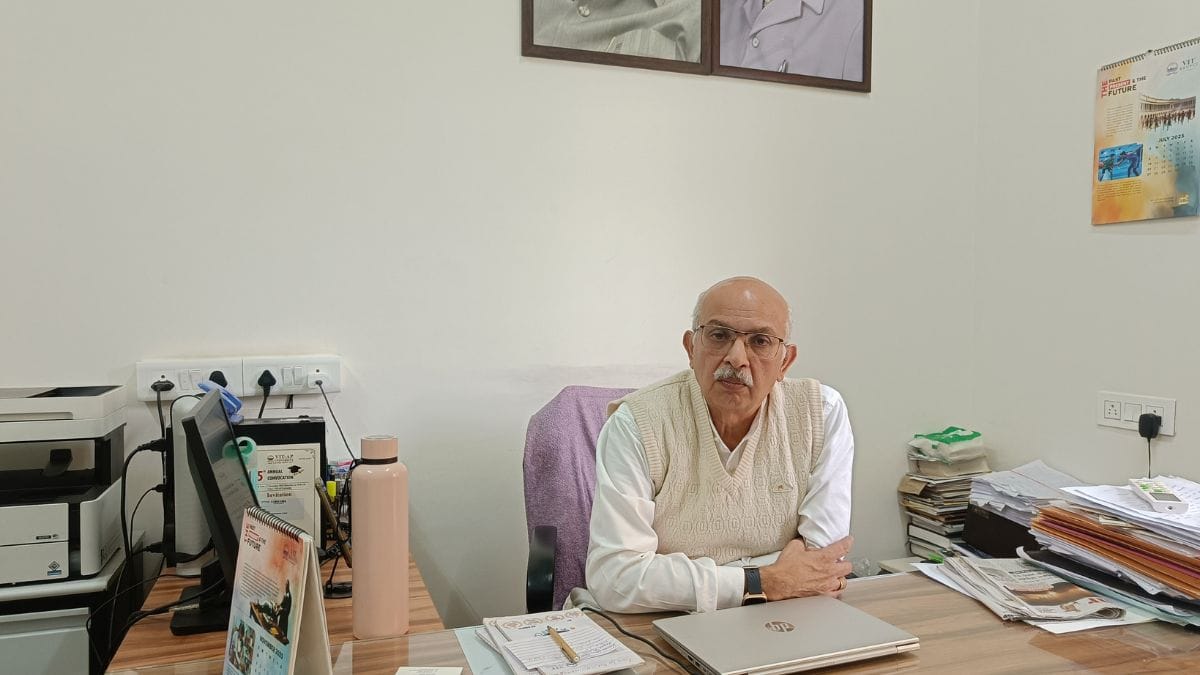
Viswanathan came from a political background. Before starting the university, he was an MP from the Vandavasi Lok Sabha constituency. He also served as a minister in the Jayalalitha government.
Situated on the Bhopal-Indore highway in Sehore district, VIT Bhopal became functional in 2017. Some of its infrastructure is more recent. Like where the students were protesting.
“It’s a new block yet we are facing amenities challenges,” said Abhishek, a student of Block 6.
Out of the 10 blocks, each is facing different challenges. At Block 5,6 and 8 students are complaining of water issues. In Block 1, there were complaints of stale food being served.
Students shared instances related to campus food. “Many times, we have seen flies and hair in the food,” recalled Harsh, adding that when one of his friends was eating chicken, it smelled foul.
According to Harsh, in the last one month alone, students have made several complaints.
“But we have not been heard and our issues were not taken seriously,” he said, while leaving the campus on Thursday afternoon.
And last summer, the campus faced water supply disruption for a week.
Sehore is one of the water deficit districts of Madhya Pradesh. “In summers, water scarcity is one of the biggest challenges in this area. March to July, every year is the toughest time for many areas of Sehore,” said HD Verma, former dean at Sehore Agriculture College.
Last year, students had gathered outside the administrative block and demanded resumption of water supply.
“At that time, the campus was completely out of water. Students demanded a holiday in response to this situation, but the college refused. This led to a day-long protest,” said Aryan.
Beyond food and water, there are also questions of personal freedoms, the students alleged, the university has put restrictions on. The students can’t step outside campus after 9 pm and there is a ban on loud music and parties.

“We are only allowed to leave campus with parental consent twice a month,” said Aryan, adding that many students were fined as they protested against the water issues in the past.
In the past, Nair said the university has fined several students who violated the rules and spread rumours about water and food.
“In 2025, over 250 students have been fined for violations including leaving the city without permission, returning late night and posting content that brings disrepute to the university,” said Nair, adding that our food and water mechanism is robust.
The university has installed a water purification system on the campus itself. Here, the ground water is filtered before discharging to the hostels. On Thursday, two days after the violence, workers were seen cleaning the plant area.
Also read: Massage is the new career frontier for India’s blind
‘No death due to jaundice’
A day after the violence, the university administration constituted an internal inquiry to examine the reasons behind the incident. University registrar KK Nair has denied the allegations that three students had died due to jaundice.
“There is no death due to jaundice. Some cases were reported two weeks ago and we admitted them at the nearest Chirayu Hospital and all are discharged from there,” said Nair.
Nair admitted that 11 girls and 22 boys had reported symptoms of jaundice and they were first examined at the medical centre of the university. “Then they transferred to the hospital,” he said, adding that the rumours of death fuelled the violence.
Tale too refused the allegation of deaths due to jaundice. But the SDM agreed that if a number of students were diagnosed with jaundice, there must be some issue with water and food at the campus. “We have taken the samples and we are waiting for the results,” he said.
On 24 November, Neha Sahukar, a student of cybersecurity and digital forensic, died at her home in Bilaspur, Chhattisgarh. This too added to the resentment on campus.
District administration and university administration, however, said Neha’s death was due to Tuberculosis. “It has nothing to do with jaundice,” said Nair.
On Wednesday, the university administration sent an e-mail to the students, declaring holidays till 8 December. Examinations originally scheduled for 4 December were also postponed.
“Dear students, you can go ahead and plan your holidays accordingly,” read an e-mail from the university administration accessed by ThePrint.
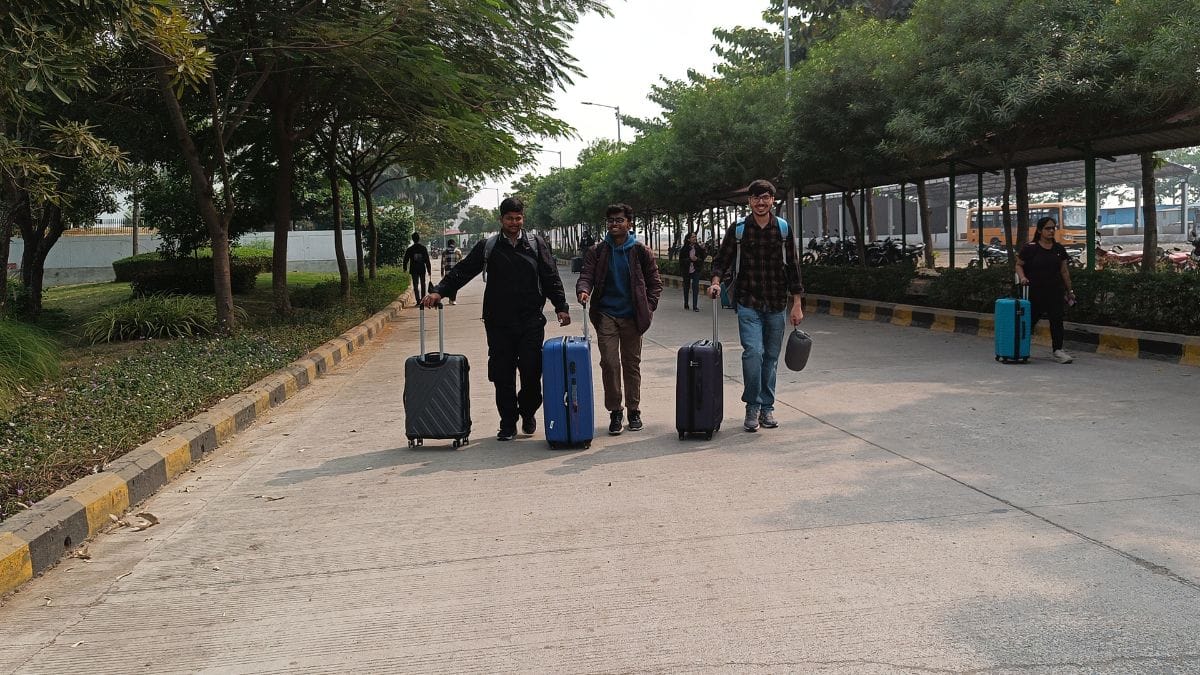
On Thursday, thousands of students left the campus with their luggage. “Leaving our space is not so easy. We have spent years here and we never thought we would leave in these circumstances,” said Harsh, a resident of Haryana.
However, Nair said departures were voluntary. “The university is operational, only the classes are suspended till 8 December.”
(Edited by Anurag Chaubey)







In the years 80s and 90s, the message fee is calculated based on dividing system and billed monthly to the students and normally there will be a committee to ensure quality and quantity of food which will have student representative. But nowadays the management collect a fixed amount for each semester and obviously this prompts the management to control the spending and earn revenue out of the collections and most of the private colleges are controlled by persons of influence and normally they do not care about the well being of students. The govt should enforce the control on these areas to avoid this sort of mismanagement.